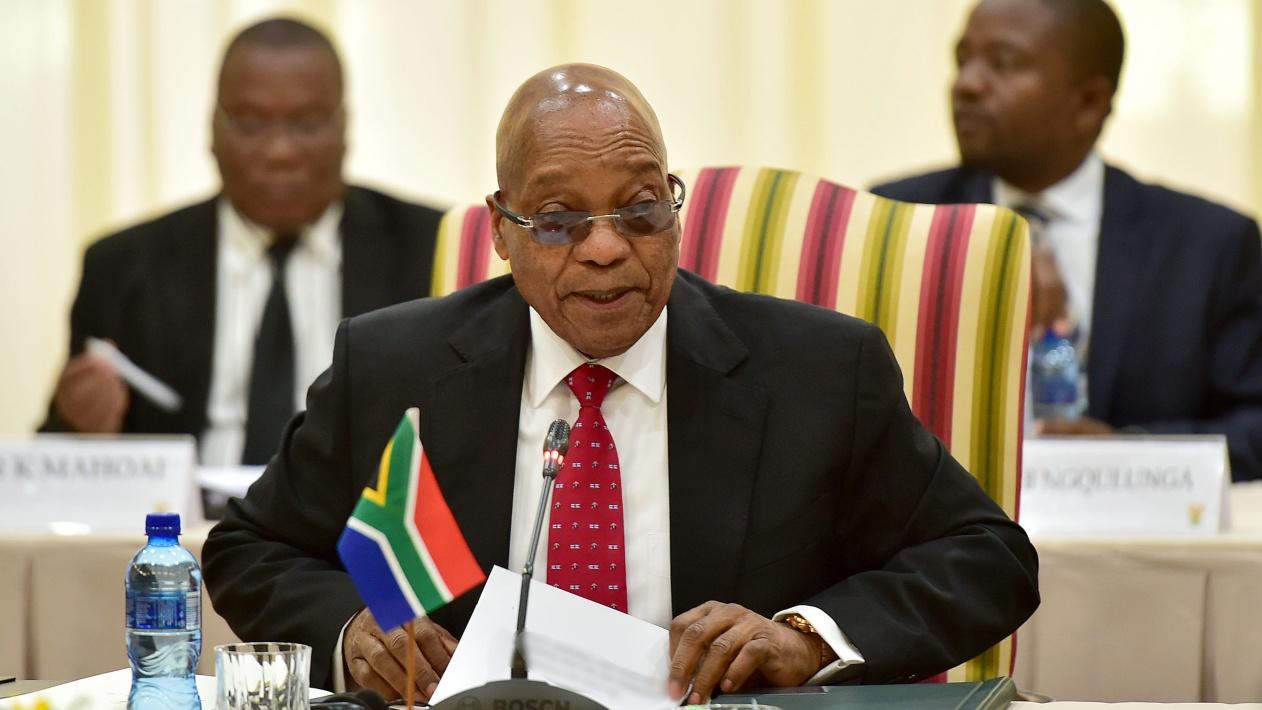South Africa’s critical national infrastructure is under continuous attack. Organised crime and saboteur networks are waging a hybrid war that is devastating South Africa’s national capabilities. But the state’s response has been hamstrung by the siloed approaches of the country’s security services, writes Dries Putter.
The recent revelations that South African National Defence Force (SANDF) personnel have been deployed at Eskom power generation plants is a very welcome first step towards securing the national infrastructure which is vital to economic development in the face of projected R100bn losses due to criminality and other threats to state-owned enterprises.
These criminal networks have been exposed at great expense by several State Capture Commission reports. The State Capture Reports describe in detail how organised crime groups have infiltrated political and business institutions across the country. This process started around the appointment of erstwhile President Jacob Zuma in 2009 and continued unabated for at least a decade whilst growing ever more sophisticated. The activities, which included murder, fraud, sabotage, subversion, bribery, and corruption, were aimed at taking complete control of the South African government and associated institutions for private gain.
The threats to national security highlighted in these reports fall squarely in the domain of counterintelligence. The State Security Agency (SSA) and military counterintelligence both have a mandate to deal with such threats. Yet, the creation of an integrated operational campaign by these services and agencies remains challenging – leaving South Africa’s critical infrastructure vulnerable to the tools of hybrid warfare. The North Atlantic Treaty Organisation has a concise description of hybrid warfare which includes (but is not limited to) “propaganda, deception, sabotage and other non-military tactics.” These methods are typically associated with non-state actors such as organised crime and covert action implemented by states such as intelligence and security agencies.
More than just a show of strength
The physical presence of military personnel at Eskom infrastructure is the first critical step towards boosting the security around critical infrastructure. A recent blueprint for success can be found in the SANDF’s recent deployments to the border were supported by modern tactics and technology, the army effectively suppressed illegal entry and exit and smuggling operations along a notoriously porous border.
“Beyond physically securing this infrastructure, the state also needs to have the ability to detect, deter and neutralise threat actors. These are classical counterintelligence prerogatives. Failure on this front makes the country vulnerable to destabilisation.” Dr Putter and Prof Bachman in August 2022
Deploying SANDF personnel to physically secure hotspots such as Camden, Grootvlei, Majuba and Tutuka power stations must be reinforced with significant intelligence, counterintelligence, and vetting campaigns to ensure these troops are well supported and do not become targets themselves for either violence or to be turned onto organised crime.
When reading the State Capture Reports, it is easy to see how organised crime and other threat actors, such as foreign intelligence, might infiltrate the troop deployments guarding infrastructure to, for example not report surveillance of critical infrastructure. Similar tactics were used during Russian surveillance of Norwegian oil and gas infrastructure as recently as 2022.
Making the most of intelligence
The security of national infrastructure should not only include the visible presence of security personnel but also several aspects of defensive counterintelligence. Defensive counterintelligence includes security vetting and physical security techniques. Defensive counterintelligence measures are designed to reduce security risk and vulnerability to attacks by foreign intelligence agencies and typically also organised crime.
Physical security such as the deployment of guards are typically in response to hybrid threats such as sabotage, and can also be bolstered with enhanced offensive counterintelligence measures. This involves all those activities that seek to identify threats and the associated people, deploying people that can infiltrate these organised crime and foreign intelligence networks so that law enforcement agencies can make arrests. Using the relevant technology can also greatly assist in identifying and deterring acts of sabotage and other ills associated with organised crime.
This calls for integrated security-related operations, driven by South African intelligence agencies (SSA) and services (Defence Intelligence Division), should be implemented to reduce the risk of counterintelligence-related breaches in the security of the personnel deployed. It is heartening to know that an Economic Sabotage of Critical Infrastructure (ESCI) Forum, providing at least first-order integration of security-related aspects, has been established. One can only hope that the ESCI understand that actionable intelligence is the key driver of any successful security operation and that such intelligence is only as good as the counterintelligence that shields it. With the SANDF poised to deploy internally to secure Eskom infrastructure, it is a perfect time for military intelligence and state security functional boundaries to evolve to ensure flexibility and adaptability in the face of evolving threat environments.
Time for tech
Physical infrastructure can be secured effectively if supported by technology. Drone technology is now freely available and can be deployed to provide immediate and continuous monitoring of an area. This information can then be relayed to support tactical and operational decision-making. The successful use of drone technology in Russia’s invasion of Ukraine highlights the versatility of drones in contested spaces. South Africa has longstanding drone expertise which should be tapped into for this purpose. Such versatility should be added to the protection (defensively and offensively) of South African critical infrastructure.
Integrating military and state security functions more effectively will take a paradigm shift from a governance perspective. But it is time for these two distinct organisations to cooperate more closely on issues such as intelligence sharing, hardware capabilities and collaborate in training and education. These aspects will gradually eliminate the siloed approaches to national security that are counter-productive when facing hybrid threats.
Perhaps protecting South Africa’s critical national infrastructure will be the first step.
Photo credit: Government ZA used with permission CC BY-ND 2.0





